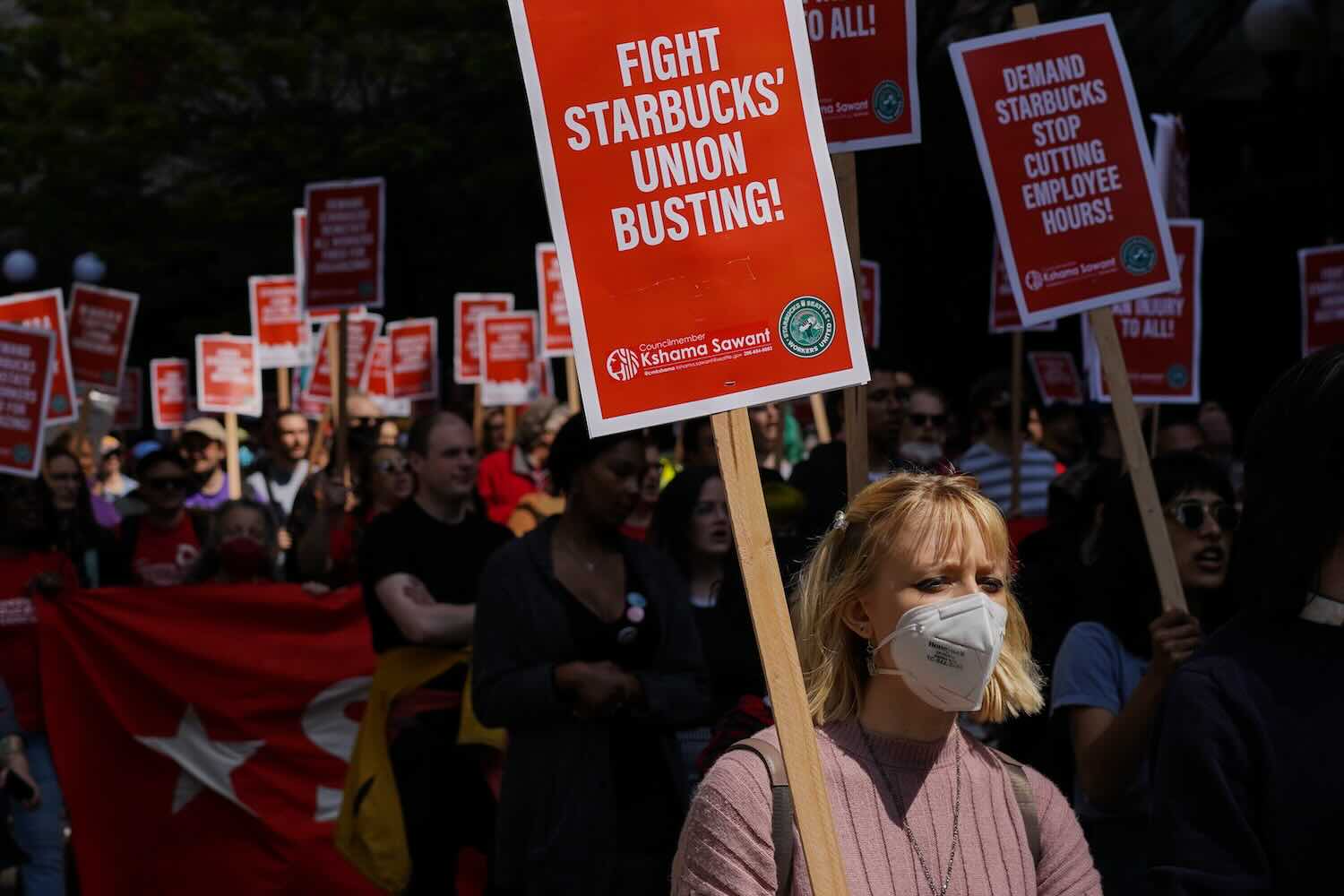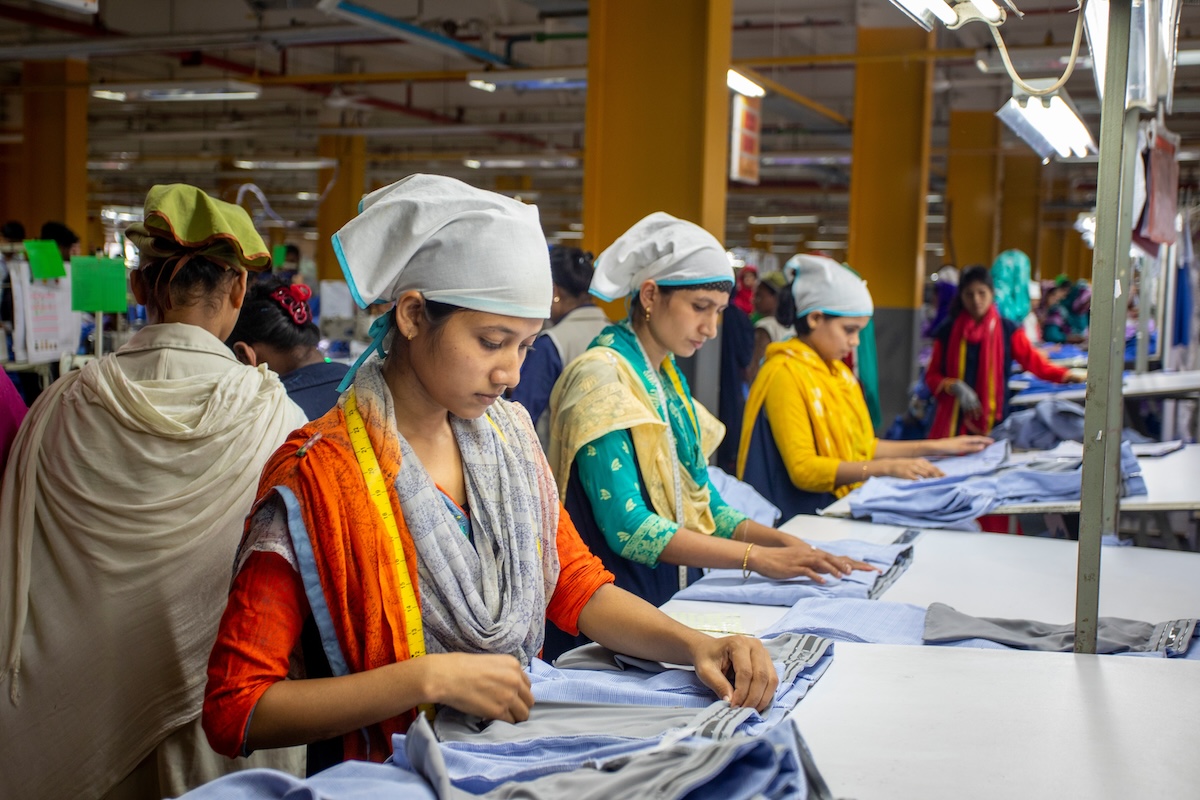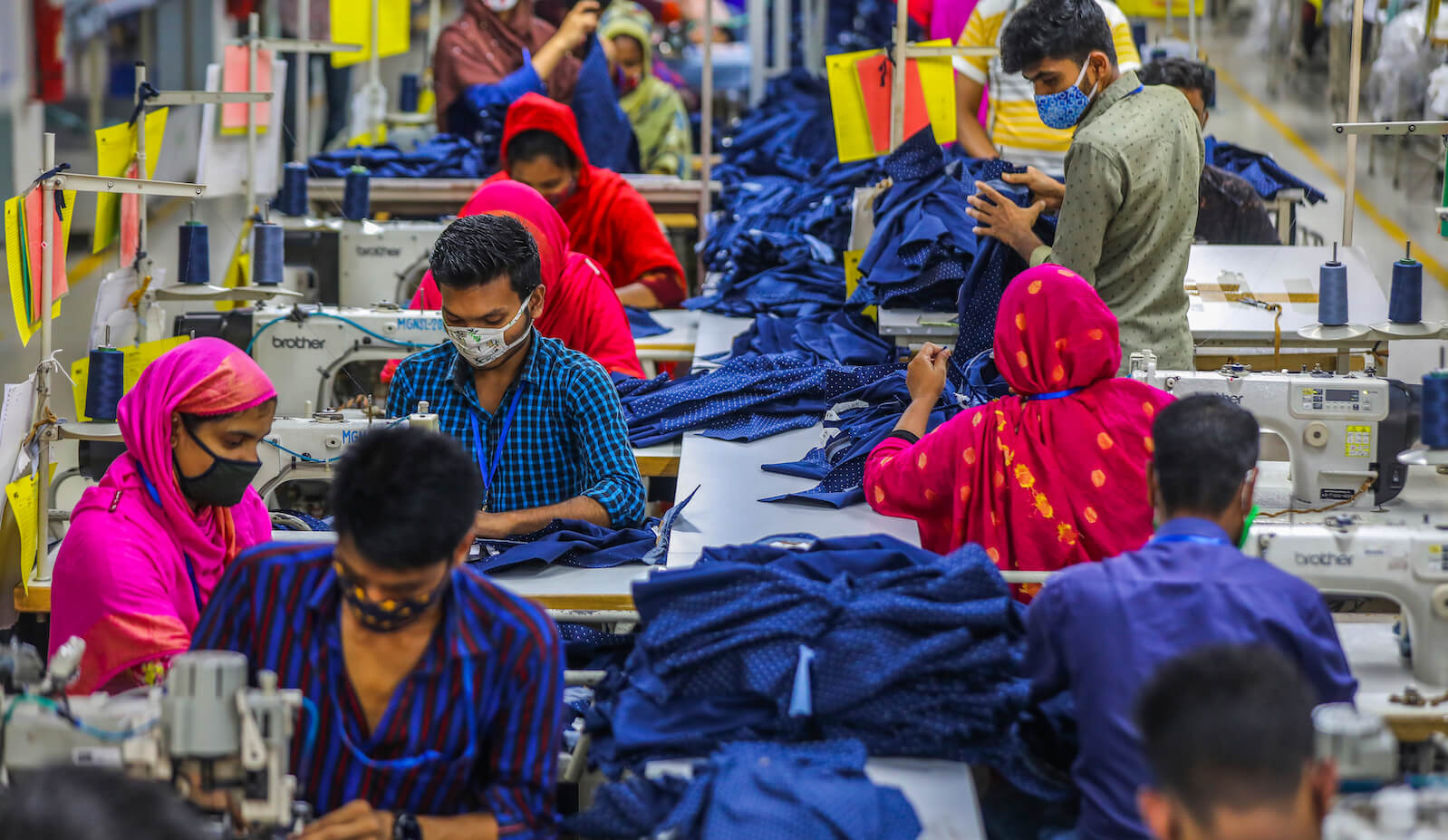Who’s center-stage in this pivotal year for US organized labor?
Amtrak Joe Biden, the self-proclaimed labor-friendliest president in history? More like the baristas at your local Starbucks.
One of the most-watched recent labor battles has been between Starbucks, home to burnt coffee and pumpkin-spiced lattes, and Workers United, a union which has sought to help Starbucks baristas organize since 2021. Starbucks fought back.
The Starbucks fight is different from past labor battles in that it has played out in the boardroom as well as the picket line. Unions have learned from their activist hedge fund counterparts, and maybe the climate movement, to make the economic as well as human capital case: blocking workers’ right to organize is bad for shareholders.
The union’s strategy was set to make Starbucks’ one of the most high profile proxy fights of this year. The board battle was averted in February when Starbucks management reached an agreement with the union almost at the last minute, and the union’s backers withdrew its slate of board nominees.
The Starbucks drama shows how a tight labor market, a greater realization of the importance of worker protection post COVID-19, positive policy changes and other factors have given unions a stronger hand to play than they’ve had in decades.
Important union negotiations over AI, automation, and the future of industry, have taken place among auto workers, in Hollywood, and on railways. The Federal Trade Commission this month banned noncompete agreements; the Labor Department expanded overtime. The resistance of most of the tech sector to organized labor represent new challenges for collective bargaining and worker protection.
All that puts investors in the frame, and impact investors should take notice. Impact investment strategies around quality jobs, employee ownership and sustainable brands aligned with labor and unions is a powerful combination. Impact plus labor together means the potential capital at play and the spheres of influence could become much, much larger.
Insurgent slate
Starbucks didn’t like the idea of a union because they didn’t like someone getting between themselves and their ‘partner’ employees. Starbucks employees started calling for elections, which Starbucks opposed. When stores actually held elections, more than 80% of workers voted to be represented by a union. Some 10,000 Starbucks workers across 400 stores have unionized since 2021.
The coffee company pushed back hard. The National Labor Relations Board found that the company illegally suppressed employees rights. Among other actions, the NLRB forced Starbucks to re-open stores it found had been closed as a result of the local workforce choosing to organize. In other instances they were required to rehire employees. (Many of these disputes are ongoing, including a case that came before the US Supreme Court this month.)
In November, the Strategic Organizing Center, an organized labor coalition that includes Workers United, put together a slate of three alternative board members.
The Strategic Organizing Center, or SOC, was launched in 2006 under the name Change to Win. It holds a small position in Starbucks. The coalition had run activist campaigns in the past, but this was its first time nominating candidates for company board of directors.
The Strategic Organizing Center positioned its slate as better suited to represent not only workers, but all shareholders at the coffee chain.
It was shades of Engine No. 1 taking on mighty Exxon.
One of the nominees put forward by SOC was Josh Gotbaum. A member of the Carter, Clinton, and Obama administrations. Gotbaum also has extensive finance and capital market experience. Currently a Brookings Institution guest scholar in the Economic Studies Program, Gotbaum also is one of the board members overseeing the work out of Puerto Rico’s debt.
I’ve known Gotbaum since he headed up the Pension Benefit Guaranty Corp. during the Obama administration. So after Starbucks held their annual meeting in mid-March – I called him up to get his perspective on what had happened, the state of organized labor, and the role of investors in supporting workers.
As usual, Gotbaum’s comments were thoughtful and insightful even as he made clear he was not privy to SOC or the Workers Union’s negotiations nor, of course, was he ever a Starbucks insider. Gotbaum’s thoughts are purely his own. But as someone with impeccable credentials when it comes to government, business, and labor – his father was a well-known union leader in New York – Gotbaum’s views shed light on where labor and impact may go from here and why some battles, like Starbucks, might be easier to win than others.
Doing well, doing good
Something that always struck me about Starbucks amid its fight with United Workers is that this was a company that seemingly wanted to do the right thing.
At its March 13 annual meeting, the coffee company’s CEO Laxman Narasimhan made it a point to praise the company’s workers, or, ahem, partners.
“I want to express my thanks to the 460,000 green apron partners all around the world who bring to life the Starbucks experience for our customers in our stores, digitally, at home or delivered wherever they may be,,” he said. “Our partners are remarkable symbols of our company. And know that when we operate with our partners at the heart of what we do, we are at our best.”
The company champions diversity. Mellody Hobson, president and co-CEO of Chicago-based, Black-owned asset manager Ariel Investments, chairs its board. Beth Ford, the CEO of Land of Lakes and one of the few openly LBGTQ+ leaders of a Fortune 500 company, joined the board this year.
Starbucks, too,has long been a champion of ethical supply chains. It says it is committed to ethically sourcing its coffee, tea, and cocoa, although that claim is being challenged in a lawsuit filed earlier this year. Starbucks strongly disputes the allegations. Me
Gotbaum confirmed my understanding that Starbucks generally sees itself as a good company, and one that does right by its workers.
“Starbucks built its business on a non-union model,” he explained. “It called its employees ‘partners.’ It paid better benefits and treated employees better than other businesses in the sector. As a result Starbucks prospered. And for years and years and years, Starbucks outperformed other restaurants. It led its industry in returns.”
All of which meant Starbucks, which was founded in 1971 in Seattle, Washington and named after the character in Herman Melville’s classic Moby Dick, never had a culture of organized labor. When workers started to unionize, it came as a ginormous shock to the system.
“During COVID, all of a sudden, baristas were at much greater risk than the general public,” says Gotbaum. “They couldn’t stay home. They were worried, and the customers were also worried and less happy. So it was a harder environment in which to be an employee. And so, baristas said, ‘We would like a union. We would like someone on our side.’”
Engine No. 1’s playbook
In January 2022, the Boston-based sustainable investment firm Trillium Asset Management led a group of investors representing $1.3 trillion assets in submittinging a letter to Starbucks asking the coffee company to respect the right of workers to organize and engage in collective bargaining. When that didn’t work, Trillium and others, including New York City Comptroller Brad Lander, put forward a ballot proposal on the 2023 proxy asking Starbucks to commission an independent third-party assessment of its “adherence to its stated commitments to workers’ rights to freedom of association and collective bargaining.”
More than half of shareholders voted in support of the proposal, but still the company did not change its stance. There was also a testy hearing before Congress featuring Starbucks’ longtime CEO and sometimes would-be presidential candidate Howard Schulz.
With Starbucks still unwilling to come to the table, SOC upped its game. The group would propose a separate slate of candidates to the Starbucks board, and make the case to shareholders that not allowing workers to unionize was hurting their returns.
Taking a page from the playbook of Engine No. 1, the San Francisco-based hedge fund manager that successfully placed three candidates on the board of ExxonMobil in 2021, SOC made the economic case for unionization.
SOC tried to show how Starbucks’ share price had been affected. Once a top performer, the coffee company’s stock had slumped 1.6 percent in 2023 compared to a rise of 11 percent for the S&P 1500 Composite Restaurants Index, according to a December 2023 RetailWire article cited by SOC.
SOC also benefited from a change to Security and Exchange Commission rules permitting so-called “universal proxy voting.” The 2022 rule allows proxy voters to more easily pick and choose between proposed board candidates, rather than having to commit to a slate. Under the previous rules, only shareholders that attended the meeting and voted in person could choose the à la carte option.
Some proxy experts have suggested that the change will encourage more dissident slates – SOC’s Starbucks campaign was widely viewed as a test case.
In addition to Gotbaum, SOC’s other two candidates were Maria Echaveste, a former senior White House official in the Clinton administration, and corporate attorney, andWilma Liebman, chair of the National Labor Relations Board under President Obama. The union organization was looking to put forward prospective board members with experience dealing with both business and organized labor.
From Hawaii to Seattle
Gotbaum’s own background made him perhaps particularly well-suited to being a candidate for the Starbucks board. When not serving in government, he has worked in finance and investment banking, including as a general partner and managing director at Lazard Frères.
I had forgotten that one of Gotbaum’s roles had been to turn around the then-bankrupt Hawaii Airlines in the early 2000’s. That challenge included satisfying the demands of union workers, management, customers, investors and other stakeholders.
When you stop to think about it, a passenger plane is not too different from a coffee shop, especially in coach. It’s a customer-facing frontline business – like baristas, flight attendants were very much on the front lines during COVID-19, especially when it came to battle over wearing masks. And, as Gotbaum points out, when employees are not happy, customers suffer. But while airlines mostly have strong union representation, fast-food businesses mostly do not.
Gotbaum’s more recent board experience includes being tapped in 2016 by the activist hedge fund Elliott Management (hardly a bastion of liberal lefties) to serve on the board of the Atlanta-based home construction company PulteGroup. The Elliott-nominated board members were tasked with replacing PulteGroup’s 83-year-old founder with a new CEO in a tense negotiation. By the time they were done, the stock had risen 50%.
In the case of Starbucks, SOC tapped Gotbaum to deepen its slate. All three director prospects worked hard to make the case to investors and other relevant stakeholders, including the proxy advisory companies, for why Starbucks workers should be allowed to unionize.
SOC made the case that this was a shareholder problem. First, there was the headache (and cost) of the legal disputes. And moreover, as customers started to learn that Starbucks was opposing labor, it began to impact their view of the brand – and their choice of where to grab a cup of Joe.
“Starbucks, which had a valuable record as an excellent employer, suddenly was the subject of literally hundreds of articles talking about its opposition to its employees desire to have a union on its side,” says Gotbaum. “That negative publicity has real consequences.”
From time to time, some companies develop a reputation as a bad place to work. It happened to the rideshare business Uber, as well as the e-commerce company Amazon, to name but two. Once established, that reputation can be very hard to shake, and it influences consumer behavior. For years, Starbucks had benefited from its reputation as a good employer.
Starbucks blinked. Just weeks before the company’s March 13 annual meeting, Starbucks and the Workers Union announced that they had agreed on a framework to allow for organizational and collective bargaining – and even to settle the hundreds of outstanding legal disputes. SOC withdrew its slate.
Starbucks and the Workers Union sat down last week for two days of talks, the closest that the unionized locations have come to a collective bargaining agreement, CNBC reported.
New era for workers
“Would I have liked to have become a Starbucks director and join the terrific group who is already on the board?” Gotbaum askes. “Yes absolutely. But the reason for doing this was not just to get three people into a distinguished group. The reason for doing this was to get Starbucks to move from opposition to its employees, to working with its employees and the union they have chosen to represent them.”
The union had tried for two years to get Starbucks to negotiate, and Starbucks had refused. So, Gotbaum says, “SOC got creative and said ok, ‘Let’s appeal to the shareholders.’ And that appeal worked.”
Starbucks offers another take on the legacy of Engine No. 1 vs. ExxonMobil. I had come to largely come to view that earlier campaign as, on balance, a failure. Yes, shareholders did well, but largely as a result of higher oil prices. It’s not clear that Engine No. 1 board members have been particularly effective at making a difference in Exxon’s behavior, save for some meager investments to capture and store carbon it emits. The biggest impact may have been to light a fuse under the right-wing establishment and helped spark the pushback against so-called “woke capitalism.” But unions taking a page from Engine No. 1 ‘s play book is a totally different ballgame.
COVID-19, it turns out, has been a game changer for labor. We all saw during the deadly pandemic just how vulnerable, and important, so-called front line workers are. That the people growing our food, delivering our supplies, providing our healthcare, and, yes, serving us double mocha matcha lattes, need more protection was clear. Another change that has helped organized labor is social media. Through Twitter (now X, sigh), Instagram, TickTock and other social media channels, workers are able to connect with one another.
And a tight labor market should benefit organized labor, because workers have more leverage, at least in theory. But some of the most high-profile upcoming union fights will be harder to win than at Starbucks. Amazon has been battling unionizing efforts at its warehouses for more than two years, and Elon Musk’s Tesla is a place to watch.
Labor scored a big victory this month when Volkswagen workers in Chattanooga, Tenn., voted to join the United Automobile Workers, the Chattanooga factory became the first car factory to unionize in the historically labor-unfriendly South, outside of those owned by the Big Three Detroit automakers.
Worker rights issues are showing up on more proxy proposals, including at Netflix, Amazon and Tesla.
One of the reasons that these fights will be harder: many tech companies have dual-share owner structures that leave investors with very little say over management decisions. That means change will have to come far more from employees, public pressure and investor action, not actual shareholder votes.
The tech and corporate line on unions is not uniformly hostile. Gotbaum pointed to Microsoft, which has said that it will not object if any of its workers seek to unionize. Microsoft CEO Satya Nadella has been a member of the Starbucks board of directors since 2017.
Employee ownership and the labor movement
Even impact investors have not been the biggest friends to organized labor. WIth its roots in philanthropy, private foundations and university and nonprofit endowments, impact investing has focused instead on private markets, technology, entrepreneurship, and business ownership, not on workers rights.
Unions have tended to be a larger part of the ESG conversation focused on publicly traded companies and by large public pension plans that hold the retirement funds of public-sector union members.
To the extent that impact investing does more in the public markets it can, obviously, step up and be more supportive of unions. The discussion has more focused on other ways to empower workers, specifically “quality jobs” and employee ownership. As ImpactAlpha has reported in great detail, the employee ownership discussion is a hot issue in impact investing circles.
Labor has been less than supportive, on the grounds that employee ownership initiatives blur the lines between ownership and management.
That contradiction is less stark than the supposedly worker-friendly ESG counterparts at the pension plans, managing the money of union workers, who have come over the last 30 years to rely so much on private equity to deliver investment returns. Most, though not all, private equity funds have been historically unfriendly to workers and labor.
Regarding private equity and workers, the recent comments by outgoing California State Teachers Employees Retirement System CIO Chris Ailman continue to rankle me. Private equity needs to do a better job of sharing the wealth with workers “of those companies and with the communities they invest in,” Ailman told the FT earlier this year.
Ailman orchestrated the $327 billion Sacramento, California CalSTRS move into private equity 20 years ago. As if he hadn’t had two decades to do something about this problem. The CIO says that CalSTRs does talk to its GP’s about these issues behind the scenes, if not in public.
Don’t let the door hit ya on the way out, Chris.
Worker ownership financing provides an alternative to private equity in many cases. Gotbaum, believes that collective bargaining and employee ownership do not have to be incompatible.
“Employee ownership gives workers a stake in their jobs that is different from traditional wages,” he says.
Gotbaum did some employee ownership transactions as an investment banker. He says unions can be extremely helpful to employee ownership efforts, especially the tough job of worker education around the complex deals. “It is almost certainly easier for employees to negotiate and understand it if they have a union on their side.”
Equity and wages need not be at odds. Employee ownership efforts will arguably be stronger alongside workers’ brothers and sisters in the organized labor movement. Impact capital should take labor more seriously – it’s time.
“You have to explain it to employees so they understand that their worker situation and their ownership incentives are different,” Gotbaum said.
Or are they? Let’s also explain to investors that the rise of worker power in the board room and the cap table as well as on the shop floor may align with overall success far better than we have thought.
Imogen Rose-Smith is a contributing editor at ImpactAlpha. A longtime senior writer for Institutional Investor, she was most recently a fellow in the Office of the Chief Investment Officer of the University of California.











